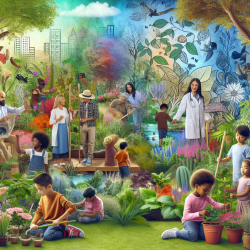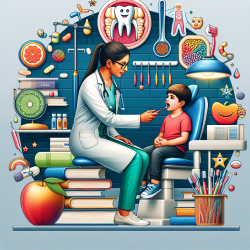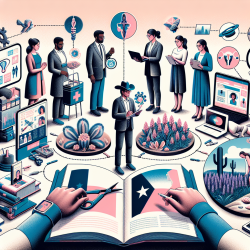Introduction
In the ever-evolving landscape of speech-language pathology, professionals are continually seeking innovative strategies to enhance their practice and improve outcomes for children. The intersection of biological and cultural diversity offers a unique perspective that can enrich our understanding and approach. Drawing from the research article "Biological and cultural diversity in the context of botanic garden conservation strategies," we explore how these concepts can be applied to speech-language pathology to foster better communication and cultural understanding in children.
The Significance of Biocultural Diversity
Biocultural diversity refers to the interconnectedness of biological, cultural, and linguistic diversity. This concept emphasizes the importance of preserving not only the natural environment but also the cultural and linguistic heritage that it supports. The research highlights the critical role that botanic gardens play in conserving this diversity, advocating for a holistic approach that considers both biological and cultural elements.
Implications for Speech-Language Pathology
Incorporating the principles of biocultural diversity into speech-language pathology can offer several benefits:
- Cultural Competence: Understanding the cultural backgrounds of children can enhance communication strategies, making therapy more effective and personalized.
- Linguistic Preservation: Encouraging the use of native languages alongside dominant languages can support linguistic diversity and cultural identity.
- Holistic Development: Recognizing the role of cultural and environmental factors in child development can lead to more comprehensive therapeutic approaches.
Practical Applications
Practitioners can implement the following strategies to integrate biocultural diversity into their practice:
- Engage with Cultural Narratives: Use stories and cultural artifacts from the child's background to create relatable and meaningful therapy sessions.
- Collaborate with Families: Involve families in the therapy process to ensure cultural practices and languages are respected and incorporated.
- Educate and Advocate: Raise awareness about the importance of cultural and linguistic diversity in educational settings and advocate for inclusive policies.
Encouraging Further Research
The research underscores the need for continued exploration into the connections between biological and cultural diversity. Speech-language pathologists are encouraged to contribute to this growing field by documenting and sharing their experiences and findings. This collaborative effort can lead to innovative solutions that benefit not only individual children but also the broader community.
Conclusion
By embracing the principles of biocultural diversity, speech-language pathologists can play a pivotal role in fostering environments where children can thrive. This approach not only enhances therapeutic outcomes but also contributes to the preservation of cultural and linguistic heritage. As we move forward, let us commit to a practice that celebrates diversity in all its forms, ensuring a brighter future for the next generation.
To read the original research paper, please follow this link: Biological and cultural diversity in the context of botanic garden conservation strategies.










